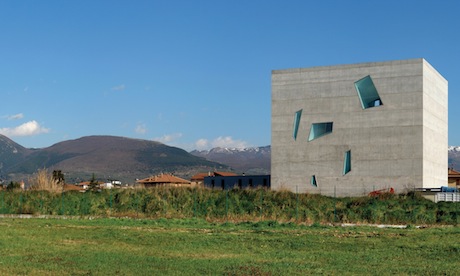Modern Catholic church design aimed at winning awards rather than for the worship of God has been criticised by Vatican officials.
“The lack of integration between the architect and the faith community has at times been negative,” said Cardinal Gianfranco Ravasi, head of the Vatican’s Pontifical Council for Culture. “Sometimes it goes wrong.”
And Antonio Paolucci, the director of the Vatican Museums, has complained that some new church buildings resemble museums rather than churches, offering “spaces that do not suggest prayer or meditation”.
Cardinal Ravasi said a church built in 2009 in Foligno, Italy, by the celebrated Italian architect Massimiliano Fuksas, which resembles a monolithic concrete cube, has been “highly criticised”, The Telegraph reported.
In his native town of Merate in Lombardy, Cardinal Ravasi said the local priest needed to bring his own image of the Madonna to Mass, because Mario Botta, the architect who designed the church, had not installed one.
“The problem is that in Catholicism, unlike Protestantism, things like the altar, the images, are essential, while architects tend instead to focus on space, lines, light and sound,” said Cardinal Ravasi.
Cardinal Ravasi conceded that one of Rome’s most controversial new churches — Richard Meier’s Jubilee Church, which resembles a yacht with spinnakers hoisted — had won over locals, but complained that “the building materials were the focus of pre-construction meetings, not the liturgical life”.
Cardinal Ravasi, speaking after inaugurating the Vatican’s first art exhibit at the Venice Biennale, said the Church now had its sights on commissioning modern liturgical art, for installing in churches.
“The Venice Biennale exhibit has been the first step on a journey,” he said. “Further down the line could come liturgical art, meaning we could commission modern artists to create altars, fonts, tabernacles, lecterns, pews and kneelers.”
But after letting modern architects push the envelope too far, the Church will keep a wary eye on liturgical art commissions, he said. “We will need to build up dialogue with artists before we commission any liturgical art.”
Source:
Image: Veneremurcernui
